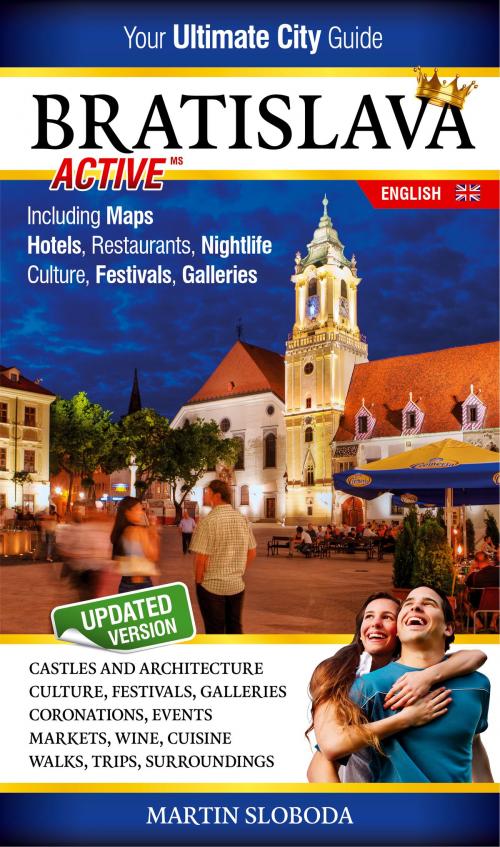| Author: | Martin Sloboda | ISBN: | 9781483528458 |
| Publisher: | BookBaby | Publication: | May 12, 2014 |
| Imprint: | Language: | English |
| Author: | Martin Sloboda |
| ISBN: | 9781483528458 |
| Publisher: | BookBaby |
| Publication: | May 12, 2014 |
| Imprint: | |
| Language: | English |
Whoever in the past decided that there would be a town in this place laid down the foundation for its later prosperity. Except when trade and development have been impeded by wars, regimes and borders, Bratislava has always been a flourishing and prosperous town which has made the most of its strategic position on the Danube and at the intersections of important European trade routes. In the Mediaeval period and later in the 18th century, Bratislava was a significant economic centre and later also a cultural and political centre of Central Europe. It was thanks to its location that Bratislava in the 16th century became the capital and coronation town of the Hungarian Kingdom and the place where its crown jewels were kept. For one thing, it was remote from the invading Turks, but on the other hand it was conveniently close to imperial Vienna, from where the whole of the Austro-Hungarian Empire was to be governed for the following almost 500 years. Vienna and Bratislava were very closely connected economically, culturally and politically, for a long time. In the 18th century the Castle was rebuilt and served as a summer residence for Queen Maria Theresa who visited the town frequently due to its proximity to Vienna. Another reason for her frequent visits was the fact that her favourite daughter Maria Christine lived here for almost 20 years. What had in the past been a long-term advantage, suddenly in the middle of the 20th century came to constitute a major disadvantage and Bratislava was obliged to pay heavily for its unique position. After the communists came to power in 1948, an Iron Curtain, visible from the city centre, was drawn which brutally divided what had been a single economic and cultural region. Following the fall of commusim in 1989, Bratislava could at last develop as a free town and re-establish close relations with Vienna. Now, paradoxically, it was Vienna which held the excluded region back from its more rapid growth. Although much was resolved once Slovakia became a member of the European Union in 2004, the final impediment to the rapid development of the cross-border Euro-region was removed as late as 2007 when a motorway on the Austrian side came into operation and Slovakia became part of the Schengen group.
Whoever in the past decided that there would be a town in this place laid down the foundation for its later prosperity. Except when trade and development have been impeded by wars, regimes and borders, Bratislava has always been a flourishing and prosperous town which has made the most of its strategic position on the Danube and at the intersections of important European trade routes. In the Mediaeval period and later in the 18th century, Bratislava was a significant economic centre and later also a cultural and political centre of Central Europe. It was thanks to its location that Bratislava in the 16th century became the capital and coronation town of the Hungarian Kingdom and the place where its crown jewels were kept. For one thing, it was remote from the invading Turks, but on the other hand it was conveniently close to imperial Vienna, from where the whole of the Austro-Hungarian Empire was to be governed for the following almost 500 years. Vienna and Bratislava were very closely connected economically, culturally and politically, for a long time. In the 18th century the Castle was rebuilt and served as a summer residence for Queen Maria Theresa who visited the town frequently due to its proximity to Vienna. Another reason for her frequent visits was the fact that her favourite daughter Maria Christine lived here for almost 20 years. What had in the past been a long-term advantage, suddenly in the middle of the 20th century came to constitute a major disadvantage and Bratislava was obliged to pay heavily for its unique position. After the communists came to power in 1948, an Iron Curtain, visible from the city centre, was drawn which brutally divided what had been a single economic and cultural region. Following the fall of commusim in 1989, Bratislava could at last develop as a free town and re-establish close relations with Vienna. Now, paradoxically, it was Vienna which held the excluded region back from its more rapid growth. Although much was resolved once Slovakia became a member of the European Union in 2004, the final impediment to the rapid development of the cross-border Euro-region was removed as late as 2007 when a motorway on the Austrian side came into operation and Slovakia became part of the Schengen group.















